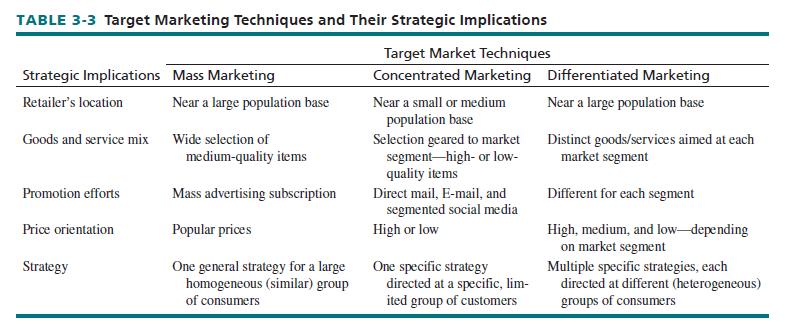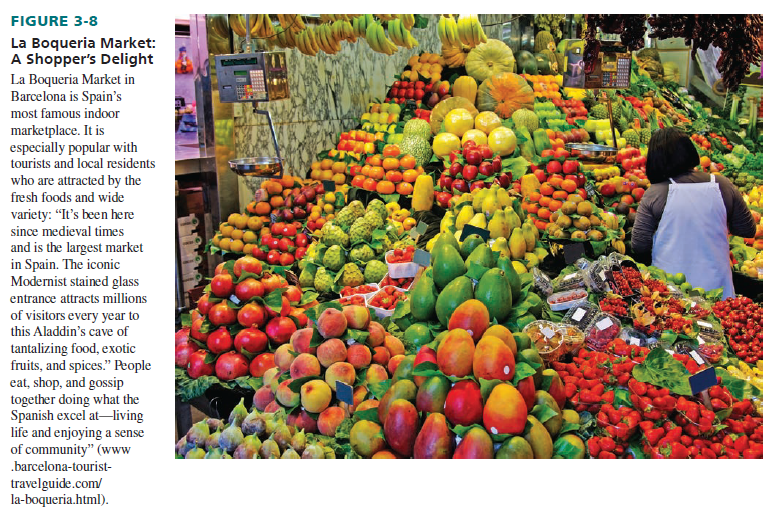The customer group sought by a retailer is called the target market. In selecting its target market, a firm may use one of three techniques: mass marketing, selling goods and services to a broad spectrum of consumers; concentrated marketing, zeroing in on one specific group; or differentiated marketing, aiming at two or more distinct consumer groups, with different retailing approaches for each group.
Supermarkets and drugstores define their target markets broadly. They sell a wide assortment of medium-quality items at popular prices. In contrast, a small upscale men’s shoe store appeals to a specific consumer group by offering a narrow, deep product assortment at above-average prices (or in other cases, below-average prices). A retailer aiming at one segment does not try to appeal to everyone.
Department stores are among those seeking multiple market segments. They cater to several customer groups, with unique goods and services for each. Apparel may be sold in a number of distinct boutiques in the store. Large chains frequently have divisions that appeal to different market segments. Darden Restaurants operates Olive Garden (Italian), LongHorn Steakhouse (emphasis on beef entrees), Capital Grill (American-style with “relaxed elegance”), Seasons 52 (seasonal grill and wine bar), Bahama Breeze (Caribbean-style), Eddie V’s (seafood), and Yard House (food and craft beer) restaurants for customers with different food preferences.
After choosing the target market, a firm can determine its best competitive advantages and devise a strategy mix. See Table 3-3. The significance of competitive advantages—the distinct competencies of a retailer relative to competitors—must not be overlooked. Some examples will demonstrate this:
- Tiffany seeks affluent, status-conscious consumers. It puts stores in prestigious shopping areas, offers high-quality products, uses elegant ads, has extensive customer services, and has rather high prices.
- Kohl’s targets middle-class, value-conscious shoppers. It locates mostly in suburban shopping areas, offers national brands and Kohl’s brands of medium quality, features good values in ads, has some customer services, and charges below-average to average prices.
- T.J. Maxx, an off-price store chain, aims at extremely price-conscious consumers. It locates in low-rent strip shopping centers or districts, offers national brands (sometimes overruns and seconds) of average to below-average quality, emphasizes low prices, offers few customer services, and sets very low prices.


The key to the success of each of these retailers is its ability to define customers and cater to their needs in a distinctive manner. See Figure 3-8. Retailers are better able to select a target market and satisfy customer needs if they have a good understanding of consumer behavior. This topic is discussed in Chapter 7.
Source: Barry Berman, Joel R Evans, Patrali Chatterjee (2017), Retail Management: A Strategic Approach, Pearson; 13th edition.

The next time I read a blog, I hope that it doesnt disappoint me as much as this one. I mean, I know it was my choice to read, but I actually thought youd have something interesting to say. All I hear is a bunch of whining about something that you could fix if you werent too busy looking for attention.